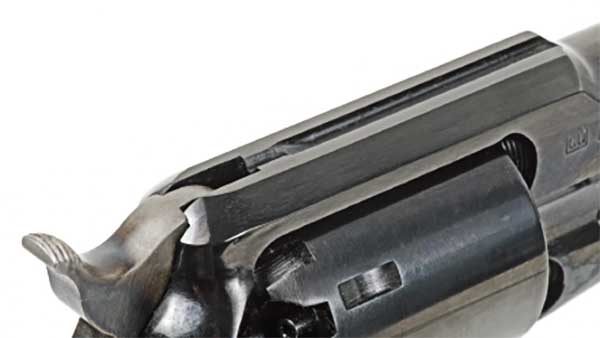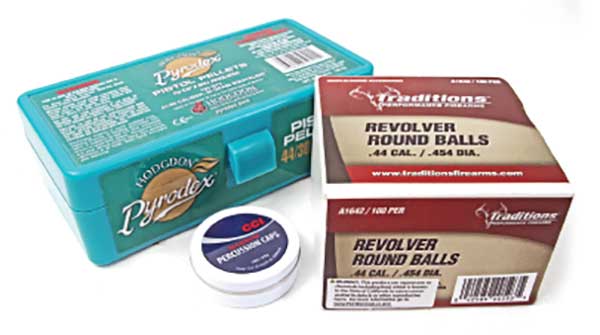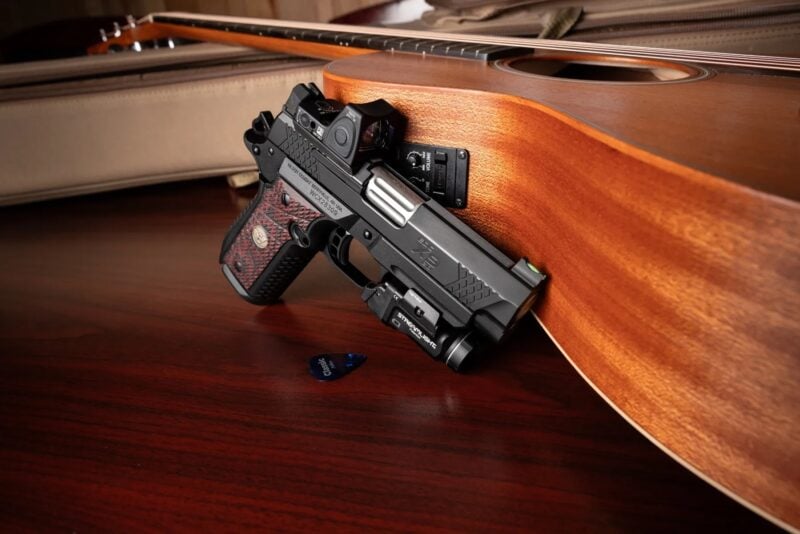Tomorrow's Revolver, Yesterday
The Radical Remington New Model Army .44
I find black powder revolvers to be practically irresistible. My dad and I used to shoot his Italian-made reproduction Model Army 1860 revolver in the backyard when I was a kid, and I’ve been fascinated by them ever since. Sure, I own a lot of plasticky polymer pistols and a few more 1911’s today, but the graceful and beautiful lines of these classics draw my eye immediately. With their flowing and sweeping curves, they look more like works of art than weaponry.
Most of these revolvers from this era may look downright alien to modern eyes, but those from Remington were truly ahead of their time. The Remington New Model Army revolver, popularly — if inaccurately — known as the “1858,” was close on the heels of the more well-known Colt Model Army 1860 in regard to numbers produced during the Civil War. And though the Colt may have had better name recognition, the Remington was unquestionably a more modern and innovative design.
Obvious Advantages
While Colt revolver designs centered on an open top strap design, the Remington took a different tack. Rather than a “two-part” frame design where the cylinder is sandwiched between the rear frame and the forward barrel assembly as with the Colts, the Remington sported a one-piece, all-encompassing frame.
The advantages of this approach are numerous. Firstly, this is a frame with more strength than a comparable Colt design. Also, it allows for a fixed sighting channel along the top of the frame rather than a simple notch cut into the nose of the hammer as with a Colt. Another advantage is the fact the cylinder can be removed quickly from the Remington rather than having to disassemble it as with a Colt.
As a result, an industrious and well equipped Remington user could carry spare loaded cylinders and swap in a fresh one in a matter of seconds. Try matching this pace with an 1860 Colt … The process on the Remington is simple: Ease back the hammer a bit on an empty gun, lower the loading lever and pull the cylinder pin forward and then roll the empty cylinder out the side of the frame. Reverse the order for loading and you’re ready to go.
A New Tradition
Unfortunately, I’d never had a chance to try out one of these Remington- pattern guns — a deficiency I decided should be addressed. I spotted a Traditions Firearms 1858 Army Revolver for $359 on their webpage and immediately added it to my cart — remember, you can buy black powder firearms directly and have them shipped right to your door. I also picked up a 100-pack of their .44-cal., 140-gr. revolver round balls and a 50-pack of .44/.45-cal. “Wonder Wads.” Along with some CCI muzzleloader percussion caps, I also decided to grab some Hodgdon Pyrodex 44/30 Pistol Pellets. Described by the company as being “designed to bring cap and ball revolvers into the modern age!” I figured the Pyrodex pellets, packing in a 30-gr. volume for .44/45-cal. cap and ball revolvers, would be a great match for a revolver so far ahead of its time.
The revolver that arrived was a beauty to behold. The steel parts had a deep blue finish with exceptional polishing on the metal, with the flats of the octagonal barrel sporting crisp edges and no waves. The triggerguard is of polished brass, the hammer is color case-hardened and the attractive walnut grips feature brass bushings for the single blued steel grip screw. While the barrel sports “Pietta” and “Made in Italy” modern markings, the gun’s craftsmanship truly hearkens back to an earlier era. Did I mention I was a sucker for black powder revolvers? I will say I was struck by the massive size of the gun. Admittedly, I’ve been a bit spoiled by today’s “plastic” guns weighing in around 25 oz. or so, and having an overall length in the 7″ range. By comparison, this revolver seems like a small artillery piece. Although the smooth, unfluted six-shot .44-cal. cylinder is surprisingly petite, the rest of the revolver is massive. It weighs in at nearly 3 lbs., has an 8″ barrel and an overall length of 14.5″. Needless to say, this is not a good candidate for CCW in your front pocket!
I took the Traditions out with the round balls, CCI caps, Pyrodex pellets and all the other accoutrements of black powder shooting and headed to the range. It had been a while since I’d fired a cap and ball revolver, but I fell back into it quickly. I quickly sported a broad smile behind the white smoke as I ran several cylinders through the Traditions revolver. The Hodgdon Pyrodex pellets made loading much simpler, and all in all it was a great outing.
Yesterday, Today And Tomorrow
Did the Traditions 1858 live up to my expectations? You bet! It’s a great opportunity to own a reproduction of a classic gun at an affordable price. I must say the workmanship of the revolver was impressive, and well beyond what the price tag suggested. I was also impressed by the shootability of the Remington design. From the ease of operation to the sighting plane atop the top strap, the revolver was a true pleasure to shoot. Considering when it was introduced, its revolutionary features truly made it tomorrow’s revolver for its day — and one that still impresses even now!
For more info:
Subscribe To American Handgunner

Get More Revolver Content Every Week!
Sign up for the Wheelgun Wednesday newsletter here:








